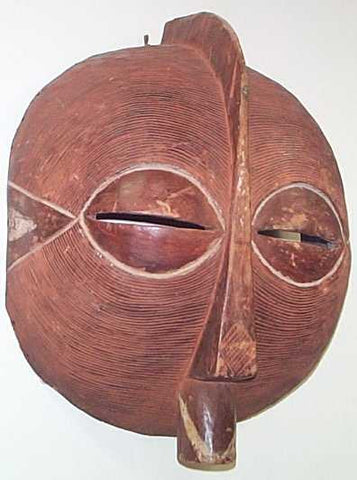ArtTribal.com
Female Kifwebe Mask
ArtTribal.com
Email vera@arttribal.com for shipping outside of continental US
The Luba attribute the origins of thekifwebe society to three spirits, which emerged from a ditch near a lake. The female spirit was attracted by humans and went to live among them. The two male spirits stayed in the bush, but visited the village where they dazzled the inhabitants with their dancing to the point where the men begged to be initiated. The grooves marking the surface of kifweberefer to the ditch from which the founding spirits emerged. The masks therefore are marked with signs of the portal to the other world. During the first two decades of the twentieth century, the kifwebe masking tradition spread throughout the Luba and Songye regions of southwest DRC. They were worn in male/female pairs for royal ceremonies, on the night of the new moon when ancestors are honored, during initiation and funeral ceremonies, and when a person assumed an important political title. They also are perceived as having healing abilities. These masks were worn with a raffia costume. Examples of the roundkifwebe masks entered European collections by the second half of the nineteenth century. Female kifwebe masks differ by smaller crests or even by lack of them.
Product Details:
- Size: 28" x 21" x 12"
- Shipping: 800.00
- Material: Wood
- Quantity: 1 available in stock
- SKU: #LUBA01

